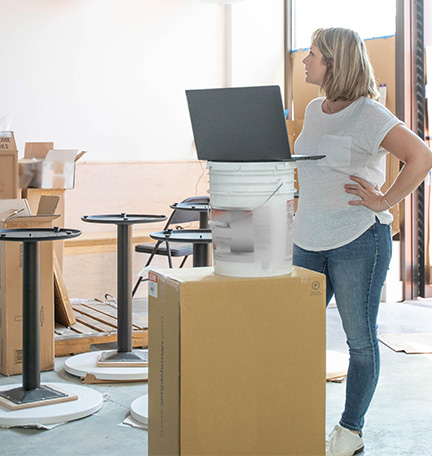Self-service platforms make search engine marketing (SEM) easier, but understand the nuances before running your first campaign.
A small business’s rankings in relevant searches could play a significant role in its success, both online and offline. Search engines like Google, Bing and Yahoo rely on complex algorithms to determine what type of content to serve when a user types keywords and phrases into the search box. Their goal is to deliver the content that best meets the user’s needs. Search engine optimization (SEO) is the process by which companies ensure that their content is easily found by search engines and ranks well in relevant searches. Let’s say you run a bakery in Springfield, Illinois. If someone types “bakery Springfield” into Google, you want to be sure they see your links in the search results.
Search engine results are divided into two categories: organic and paid. Depending on your industry, ranking well organically can be incredibly difficult, especially for small businesses. You could be competing with large corporations with generous budgets to invest in content generation and link building, two key components of SEO. Paid search allows you to serve sponsored text links on search results pages by bidding on keywords. The more popular the keyword, the higher the bids.
Paid search uses a cost-per-click (CPC) pricing model, which means advertisers only pay when someone clicks on their ad. “Prices for clicks range from a few dollars per click up to hundreds of dollars. For example, the query ’Car accident attorney Orange County’ is currently more than $500 per click,” says Renee Marquardt, chief operating officer of Didit, a marketing, public relations and digital services agency.
Choosing your keywords
You need to make sure that the clicks you are paying for are useful. “Because small businesses typically do not have large marketing budgets, it’s especially important for them to make any clicks they buy matter,” says Marquardt. “This means making sure that every click they get from search engines has the highest possible probability of resulting in a conversion, which may be the execution of a lead form, the sale of a product or other meaningful interactions for the business.”
To optimize your paid search strategy, choose your keywords carefully. If your content is relevant to searchers, it is more likely they will click on the ad and continue to engage with your site. Alyssa Blair, VP, Corporate Marketing at Regions Bank, notes that you should always use data to inform your purchasing decisions. “Sometimes you have preconceived ideas about what keywords you should be buying against, but you need to look at the data and optimize from that. Sometimes a keyword might seem too expensive, so you opt to bid on a bunch of less expensive keywords instead, but the reality might be that the more expensive keyword provides a higher conversion rate, so it makes sense to spend more money on it,” she says.
Blair also suggests monitoring your click-through rate (CTR), a ratio that shows what percentage of people who see your ad click on it. This metric also affects your CPC price. Because search engines want to serve ads that people click on — that is how they make their money — they reward high-converting advertisers with favorable quality ratings that earn them pricing discounts.
Paid search tools
There are a variety of tools, both free and paid, available for assessing keywords and optimizing your spend. Google offers a suite of free resources, including Google AdWords Keyword Planner, which helps you search for keyword ideas, view statistics, and set competitive bids and adequate budgets. Other popular tools for analyzing potential keywords include SEMrush and Moz. Both offer free resources as well as subscription services. To further optimize your spend by improving conversion rates, analyze the landing page users see after clicking your ad to ensure it is designed to elicit your desired action.
The relationship between paid and organic
You can also use paid search to refine your organic search efforts. “It takes a lot of time and effort to get keywords ranked organically, so sometimes it is best to test keywords, titles, descriptions, landing pages, etc. in paid search to see how they perform and to determine how to dedicate your efforts in SEO,” explains Blair. “We have observed that sites and/or landing pages that occur in organic and paid search at the same time have a higher CTR.”
Paid search is a proven marketing tactic for driving traffic and conversions, but mastering it takes time and practice. Consider partnering with an SEM specialist who can run campaigns on your behalf and optimize your spend. Should those efforts effectively drive qualified leads to your website, the cost could pay for itself.











